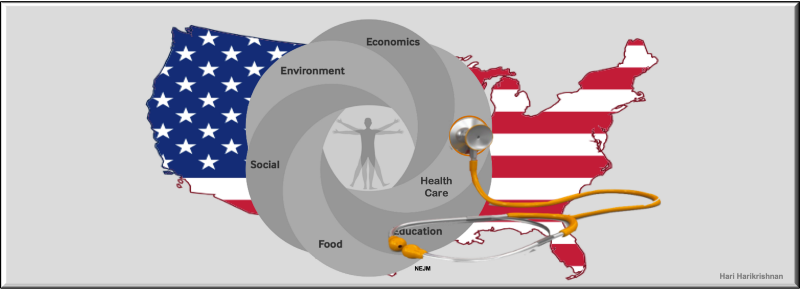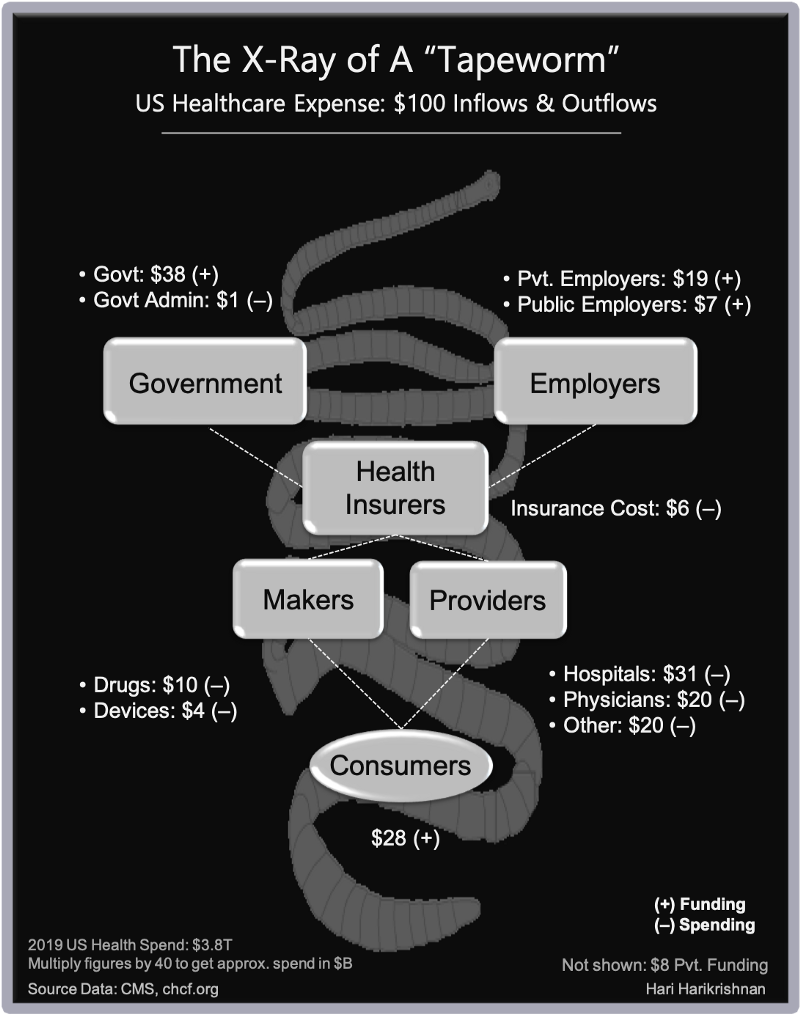A way to inventory our skills for deliberate diversification.
In 2020, we did not discuss how the labour force has to outrun the automation-and-AI bear. Instead, we were preoccupied with unemployment, with the pandemic shuffling the deck on jobs across industries. Rightly so. As we hit a reset on this decade (discounting 2020), our need to learn constantly has not changed. If at all, it has grown.
When was the last time you looked around your office or school to see who is doing work differently from you? Or gained knowledge or skill from a colleague, or enhanced an idea you got from a colleague? Can we map out what we learn and what we need to learn?
Based on my observation as a practitioner in the workplace, here’s a framework to inventory our skills. This not a Hogwart’s sorting-hat to put us in a bucket, but a frame to help assess ourselves. Any human skill categorization and cataloging is fraught with pitfalls. I’ve focused on keeping these categories focused on key skills vs. human qualities that contribute to skills.
I think of our skills as belonging to these four broad categories.
- Technical Skills: Based on our field/domain of study. This category can be broadly sub-divided into STEM (science-technology-engineering-mathematics) and non-STEM.
- Vocational Skills: Skills we use in the workplace based on the business functions we work in — from developing products or services to selling them.
- Interpersonal Skills: Being the sentient beings we are, and the need to work with others to get anything of substance done, these soft-skills become more important as our careers advance and our tasks grow complex.
- Integrative Skills: From simple to complex decision-making, we assemble and analyze information in disparate forms, use our judgement to perform “executive” functions. These skills also assume greater importance as we go from new workers to “seasoned” professionals.
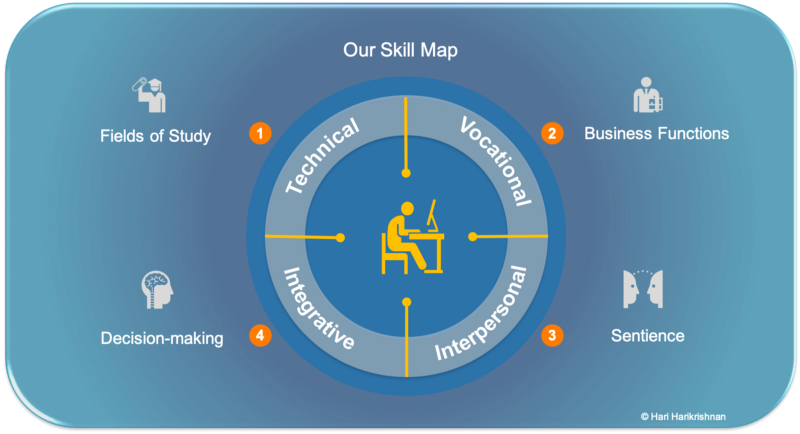
The idea of lifelong learning applies to all four categories above. Arguably, these four categories are shown in the order of difficulty to be good at. Categories 3 and 4 require very aware nurturing to master. These two are such horizontal skill categories, cutting across your field of study or your business function.
Let’s dive into each category in this Technical-Vocational-Interpersonal-Integrative skills framework. T-V-I-I or TeeVee, if you want a mnemonic to remember them by.
1. Technical Skills
I’ve clubbed most fields or domains we study academically into this “technical” category.
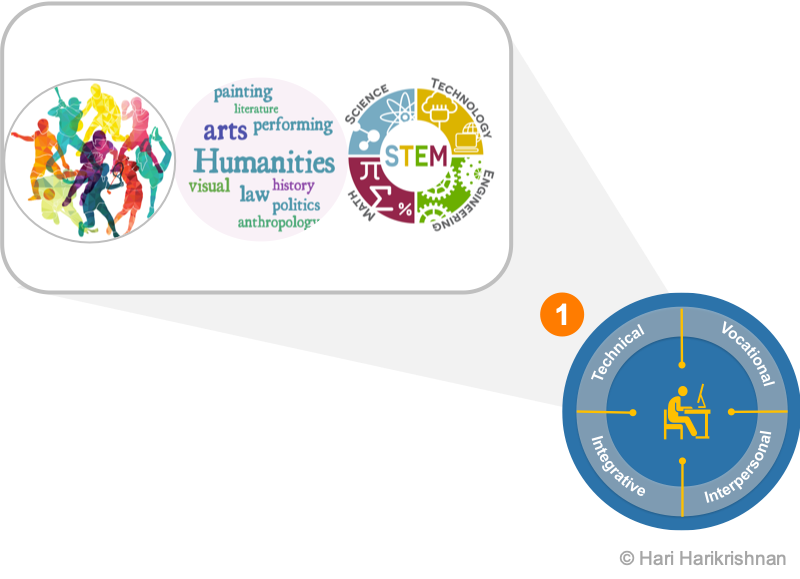
This includes, science, humanities, and sports/athletic pursuits. Quite often, our training in these fields determine which industry or vocation we choose when we graduate and enter the workforce.
Much emphasis is placed on STEM-centric education lately. At the same time, there is emerging realization that a blend of STEM and non-STEM (should we call it Root?) education may serve us better in the long-run, so that we may end up becoming more rounded individuals vs. uni-dimensional.
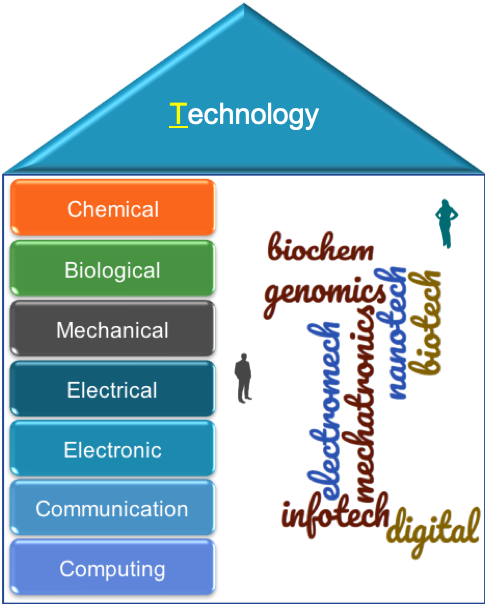
Here is a zoomed-in view of technology fields in STEM to illustrate how old and new technologies are evolving and complementing each other.
When viewed across the four skills categories described in this article, diversification within this technical skills category itself may require us to hone our skills in the other categories.
2. Vocational Skills
The vocational-skills category is about our careers and job functions in the work place — from developing and selling offers in the market as well as supporting the efforts to build and sell those offers, as shown below.
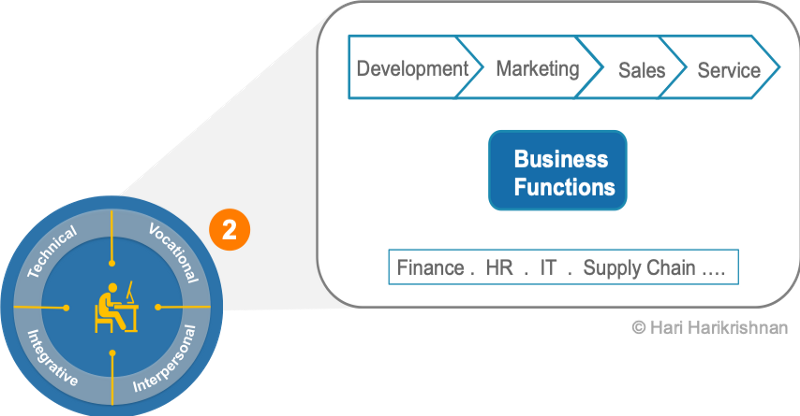
I have used development to denote any type of product or service creation that happens in a company. The sub-roles within it could be engineering, construction, researcher, actuary, film director, content creation in many forms, and so on.
These development roles will vary by industry and closely tied to the technical skills categories in quadrant 1. Given our long careers and the need to stay relevant, switching functions within the same firm or across firms is imperative to keep our skills diversified. E.g. people moving from sales to marketing or from engineering to products and marketing.
Such moves across functions is often harder than acquiring knowledge in a different field of study. i.e. you could learn machine-learning easily if you have a mathematics background, but can you go from engineering to sales? These career transitions require developing skills in the categories below.
3. Interpersonal Skills
These appear self-explanatory at the outset, but mastering them is no easy feat and is in itself a lifelong journey.

For example, it is obvious that communication skills are imperative for our success in work and life. It runs the gamut of non-verbal, verbal, written, unwritten etc. — well expressed in this German saying, “Keine Antworten ist auch eine Antworten” — no answer is also an answer.
Beyond the message content (or the absence of it), we have so many ways and means of communication that in addition to getting our message right, we need to perfect the mechanics of its conveyance. Should we do a LinkedIn message, text message, WhatsApp message, email? Slack? Zoom or Skype? Choices and decisions abound.
Good collaboration is easier said than done when we have a diverse set of expertise, styles, and work-life experiences around our virtual tables. We know that purposeful collaboration is the only way to achieve good outcomes from complex undertakings — be it a workplace project, your startup, or your social-impact endeavour. Compassion serves as a key enabler for both communication and collaboration. You may see references to this skill under empathy.
4. Integrative Skills
Think of integrative-skills category as a decision-making skill category. This set of skills needs to integrate skills and knowledge from other categories to pursue a course of action.

Analysis lies at the root of our decision-making — big or small. Curiosity feeds it, so that we ask the right questions and explore areas that relate to the decisions at hand.
The next two skills in this category verges on the realm of neuroscience. I’ll stay at a practical level and describe them, keeping focus on day-to-day applicability and not their underlying capabilities or human qualities.
4.1 Abstract Patterns, Copied
Our complex brain can recognize patterns across a wide-range of topics ranging from simple drawings, to music scores, to societal changes, as well as copy ideas creatively from one realm to another. Think similes, metaphors, and analogies, when we think of abstractions and patterns.
For a visual pattern example, the Art Deco style Chrysler Building in New York City has arches that resemble fish scales. It has portions inspired by parts of a car. Both good examples of copying and abstracting to create something new. Both apply integrative skills to technical fields in quadrant 1.
Beyond such visual patterns, some patterns could be drawn from different fields of study or business processes.
One of my favorite patterns cuts across skill categories 1 and 2. In sales & marketing, we do lead generation to prospect and close potential customers. Conversion ratios indicate how successful we are in converting a lead to a customer. This is similar to lead-generation in pharmaceuticals ( H2L: hit-to-lead), where, as part of drug discovery, we do high-volume screening to unearth new compounds that have biological or pharmacological value.
Neuroscientists attribute a capability to our brain called compression which lets us distill large amounts of data to its essence, like creating the summary of a book — page after page compressed into a few sentences that serve as the skeleton of the book. Capabilities to compress and copy underlie our ability for abstraction, pattern recognition, and creativity.
4.2 Integrating, Leading, Creating
Finally, leadership skills. We wax over what it is and what it is not. I wrote about business leadership for the digital age some years ago. The core ideas there are still relevant.
In the context of this framework, leadership requires blending skills within and across the four categories — technical, vocational, interpersonal, and integrative skills. We all have leadership skills to varying degrees. Our training and how we develop what we need for our personal and business situations is where we diverge.
Summary
A new year, especially one succeeding the terrible year we’ve had globally, is a great time to examine our skills and careers. I do hope this T-V-I-I framework offers directional insights on how to navigate your decades ahead or create your own frame-of-reference.
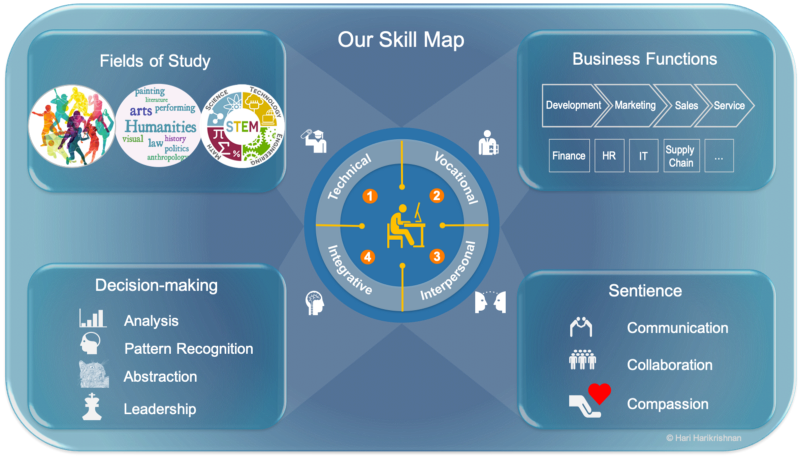
How you would categorize your skills? What you think are important for the decade ahead? All the best for a great 2021.
Originally published at https://www.linkedin.com.



